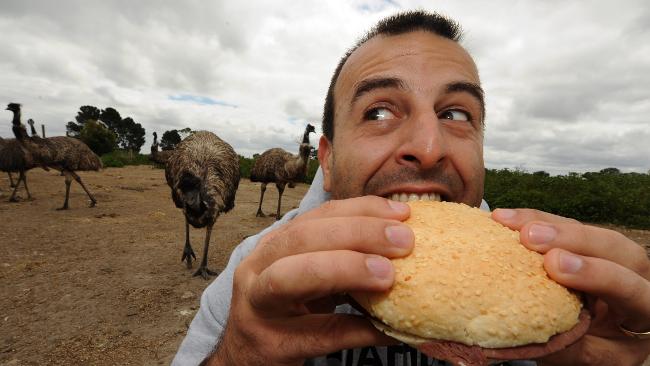In the Australian outback, a kangaroo named Joey hopped along one day, looking for something new to do. He came across an emu named Ellie who was pecking at the ground for food.
"Hello there, Ellie! Would you like to come explore with me?" Joey asked, his tail twitching with excitement.
Ellie looked up, surprised. She had never been asked to go exploring before. "Sure, Joey! That sounds like fun."
As the two new friends hopped along, they heard rustling in the bushes. Out popped a goanna named Gus.
"Hey, what are you two up to?" Gus asked curiously.
"We're going exploring," Joey replied, "Would you like to join us?"
Gus hesitated for a moment before nodding. "Sure, I'll come along."
The three unlikely friends hopped, pecked, and scurried through the bush, discovering new sights and sounds. They watched as the sun set over the horizon, and as the stars twinkled in the sky, they realized that they had found something special.
Although they were different animals, they had become friends. They had discovered that they had more in common than they thought. They all loved to explore, discover new things and have fun. They laughed, chattered, and played together until it was time to head back to their homes.
As they parted ways, Joey, Ellie, and Gus knew that they would always have each other. They had formed an unlikely friendship, but one that would last a lifetime.
Ⓒ 2023 Alan Rutherford


























